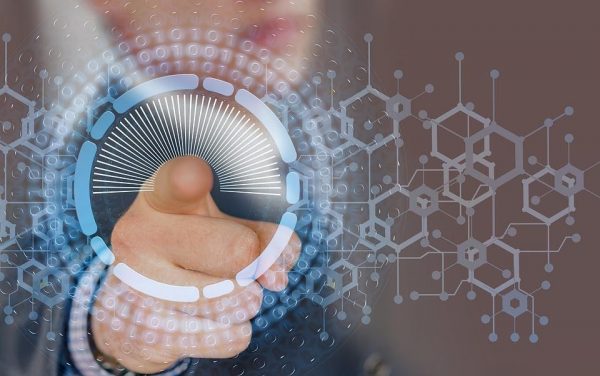Nowadays, it has become common to utilize machine learning and applied data science for cybersecurity. Hackers now use ever more ingenious techniques involving artificial intelligence to execute cyber-attacks. When it’s about the security of your business, the main target is always to detect cybersecurity risks and eliminate them, preferably before they impair your network. Latest cybersecurity tools that use data science combined with machine learning tactics help determine various patterns that could put your network at risk.

Continue reading to understand more about what these terms entail, how the latest tools use machine learning, and applied data science for cybersecurity to protect your business.
Machine Learning and Applied Data Science
Before we move towards a more in-depth discussion on ideally using machine learning and applied data science for cybersecurity, let’s understand the terminologies and the connection between them.
Machine Learning
Generally speaking, machine learning refers to artificial intelligence capable of learning from given data or personal experiences. This artificial intelligence, in other words, can frequently enhance the accuracy of their outcomes as they collect and evaluate further data.
Applied Data Science
We exist on a planet with big data, but raw figures alone cannot explain anything. Data science methods allow machine learning tools and humans to detect and recognize data findings and use those findings practically. These days data scientists with an advanced degree in data science are in high demand across various industries, including finance, science, healthcare, and government. Also, the data science master’s salary packages the organizations offer are beyond expectations. Today, all efficient machine learning tools employ applied data science toward a target or goal to make it worthwhile.
Applied Data Science in Connection with Machine Learning
Modern artificial intelligence merges machine learning tactics with applied data science. For instance:
- Sound recognition applications like Siri can recognize human voices. Over time, they improve in understanding instructions in your voice.
- Customized recommendations, whether through a streaming service or a virtual store, offer suggestions built on the content you’ve already connected with, your surfing routines, or your shopping history.
- Epidemic trackers offer known data about a disease outbreak. Then, they try to foretell through learned models where the particular disease might spread later.
Currently, the merged powers of machine learning and applied data science are an integral component of your life. It’s time to see how to use machine learning and applied data science for cybersecurity.
Three Most Common Methods of Machine Learning and Applied Data Science for Cybersecurity
You now have an overall sketch of why a company would find it essential to practice machine learning and applied data science in their cybersecurity system. Next, let’s concentrate on how this sort of cybersecurity works to improve your business. There are countless possibilities, but here we will discuss the most common approaches and describe how to use them to boost your business’s cybersecurity.
Classification
Classification is a subsection of supervised learning in which artificial intelligence comes with the data input and the output. In other words, classification mainly refers to a machine learning approach that works to foresee data labels. For cybersecurity, classification is helpful in scenarios like labeling the various types of cyber-attacks, detecting fraud techniques, and finding injection hacks. A random forest classifier is an algorithm for classification, which acts as a decision tree. The artificial intelligence will model a sequence of data points with several options and try to predict which option will occur next. Instead of only a single decision tree, the random forest will create numerous decision trees with diverse variables. Data science ensures that this algorithm will make as accurate predictions as possible.
Regression
Regression is a form of supervised learning. But where classification deals with labels, regression concentrates on numerical measures. Usually, its purpose is to discover if distinct factors affect one another, and if so, to what extent. Thus, regression patterns may help with a wide range of cybersecurity tasks, such as identifying suspicious HTTP network requests, comparing packet parameters to their conventional values, and detecting unexpected system calls. One of the most typical algorithms for such kind of learning is simple linear regression. This supervised learning algorithm attempts to determine a causal link between any two variables, suggesting that one variable directly influences the other variable.
Clustering
Unlike the other two learnings, clustering is a form of unsupervised learning. But to some extent, it resembles supervised learning as both agree that artificial intelligence is the data sets humans provide. Unlike supervised learning, every artificial intelligence has to teach itself the association between the numerous data points. We can say that unsupervised learning implies that the machine learning system recognizes the data’s input. Still, it has to determine by itself the output. The main objective of clustering is to categorize data into several groups based on which one data point resembles the other. A simple practice to understand this method is to think of a streaming service that desires to target multiple shows to different customers. One of the simplest clustering algorithms is K-Means. It’s a technique of calculating the distances among data points to discover the mutual center in each cluster of data.
For advertising, this machine learning method sounds sensible, but how does it work for cybersecurity? Various cybersecurity settings use clustering in different techniques like analyzing forensics, defending email accounts from any malware, and detecting if someone attempts to steal admin credentials.
Conclusion
There is an instant progression in data science and machine learning technologies for cybersecurity, particularly in business organizations. Cybersecurity experts are straining to meet the demands for easing the burden and ensuring dynamic cyber-attack prevention. However, hackers will eventually exploit this knowledge to execute more complex attacks. For example, botnets utilize algorithms to passively discover a route to penetrate a system and manipulate a vulnerability. Knowledge of applied data science and machine learning for cybersecurity helps recognize when the technology acts against it and solve it.
 Gearfuse Technology, Science, Culture & More
Gearfuse Technology, Science, Culture & More


